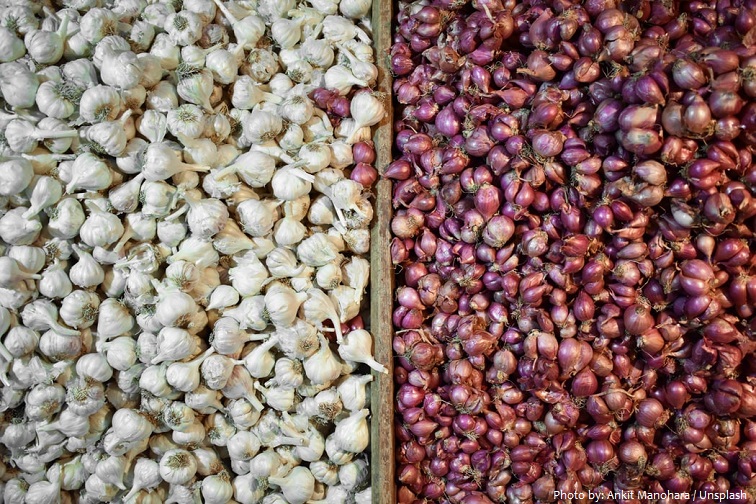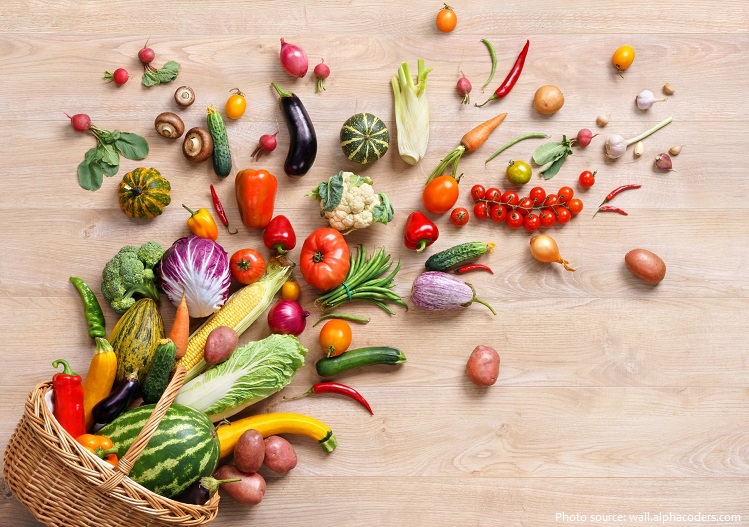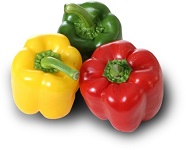Vegetables are parts of plants that are consumed by humans as food.
The term vegetable usually refers to the edible portions of certain herbaceous plants — roots, stems, leaves, flowers, fruit, or seeds.
These plant parts are either eaten fresh or prepared in a number of ways, usually as a savory, rather than sweet, dish.
Originally, vegetables were collected from the wild by hunter-gatherers and entered cultivation in several parts of the world, probably during the period 10,000 BC to 7,000 BC, when a new agricultural way of life developed.
Virtually all of the more important vegetables were cultivated among the ancient civilizations of either the Old or the New World and have long been noted for their nutritional importance.
As the birth of modern human civilizations, vegetables were identified as the sourced of great medicinal and nutritional power.
Vegetables are usually classified on the basis of the part of the plant that is used for food.
The root vegetables include beets, carrots, radishes, sweet potatoes, and turnips.
Stem vegetables include asparagus and kohlrabi.
Among the edible tubers, or underground stems, are potatoes.
The leaf and leafstalk vegetables include brussels sprouts, cabbage, celery, lettuce, rhubarb, and spinach.
Among the bulb vegetables are garlic, leeks, and onions.
The head, or flower, vegetables include artichokes, broccoli, and cauliflower.
The fruits commonly considered vegetables by virtue of their use include cucumbers, eggplant, okra, corn, squash, peppers, and tomatoes.
Seed vegetables are usually legumes, such as peas and beans.
Mushrooms, though belonging to the biological kingdom fungi, are also commonly considered vegetables.
Vegetables have vitamins A, B, C, D, minerals and carbohydrates.
The rare European white truffle is the world’s most expensive vegetable (if we considered mushroom as vegetables), with a price tag that can exceed 2,200 euros ($2,400) per 0.45 kilograms (1 pound).
Hop shoots are eaten like asparagus (and even look like one), but the difference is that these shoots are very rare. They only emerge once a year during the spring and disappear quickly, which makes it hard to harvest in the wild. Hops are the herbs of beers, and the part that brewers don’t use (the green tips of the hop plant) is called hop shoots. These are the 2nd most expensive vegetables in the world priced at 1,000 euros per kilogram, or about $1,100 per 2.2 pounds.
The 3rd most expensive vegetable in the world is the La Bonnotte variety of potato. It is grown on the French island of Noirmoutier and is the most expensive type of potato in the world. Having reached heights of around $600 per 1 kilogram (2.2 pounds), La Bonnotte potatoes are harvested three months after planting and picked before they reach maturity.
The word “vegetable” was first recorded in English in the early 15th century. It comes from Old French, and was originally applied to all plants; the word is still used in this sense in biological contexts. It derives from Medieval Latin vegetabilis “growing, flourishing” (i.e. of a plant), a semantic change from a Late Latin meaning “to be enlivening, quickening.”
The meaning of “vegetable” as a “plant grown for food” was not established until the 18th century. In 1767, the word was specifically used to mean a “plant cultivated for food, an edible herb or root.” The year 1955 saw the first use of the shortened, slang term “veggie”.
The merit of the ongoing question, “is it a fruit, or is it a vegetable?,” has even found its way before the bench of the United States Supreme Court which ruled unanimously in Nix v. Hedden, 1883, that a tomato is a vegetable for the purposes of 1883 Tariff Act even though botanically, a tomato is a fruit.
Tomatoes are the most popular vegetables in the world. It originated in the South American Andes around the area of modern day Peru and was first used as a food by the Aztec’s in Southern Mexico.
In Egypt, onions were considered to be an object of worship. The onion symbolized eternity to the Egyptians who buried onions along with their Pharaohs. The Egyptians saw eternal life in the anatomy of the onion because of its circle-within-a-circle structure.
Carrots were originally white or purple. The modern day orange carrot wasn’t cultivated until Dutch growers in the late 16th century took mutant strains of the purple carrot and gradually developed them into the sweet, plump, orange variety we have today.
First ancient civilization that truly incorporated garlic into their diet was Egypt. In 3rd millennium BC garlic was used not only by nobility, but also in medicine, religious rituals and was given to the slaves as a powerful source of strength.
Potatoes have almost all nutrients humans need to survive. To prove this, the Executive Director of the Washington State Potato Commission ate nothing but potatoes for 60 days.
Packages of 3 bell peppers , green, yellow and red are sometimes sold as “Traffic Light Peppers.”
Vitelotte also called Vitelotte noire is a gourmet French variety of blue-violet potato. It has been cultivated in France at least since the early 19th century.
Incidentally, the first documented use of the phrase “cool as a cucumber” was in the poem “A New Song” by English poet and playwright John Gay in 1732.
The Greek philosopher Aristotle credited the clear voice of the partridge to a diet of leeks, while the Roman emperor Nero supposedly ate leeks everyday to make his voice stronger.
Buying and consuming seasonal vegetables means to eat in a healthy, correct and natural way.








